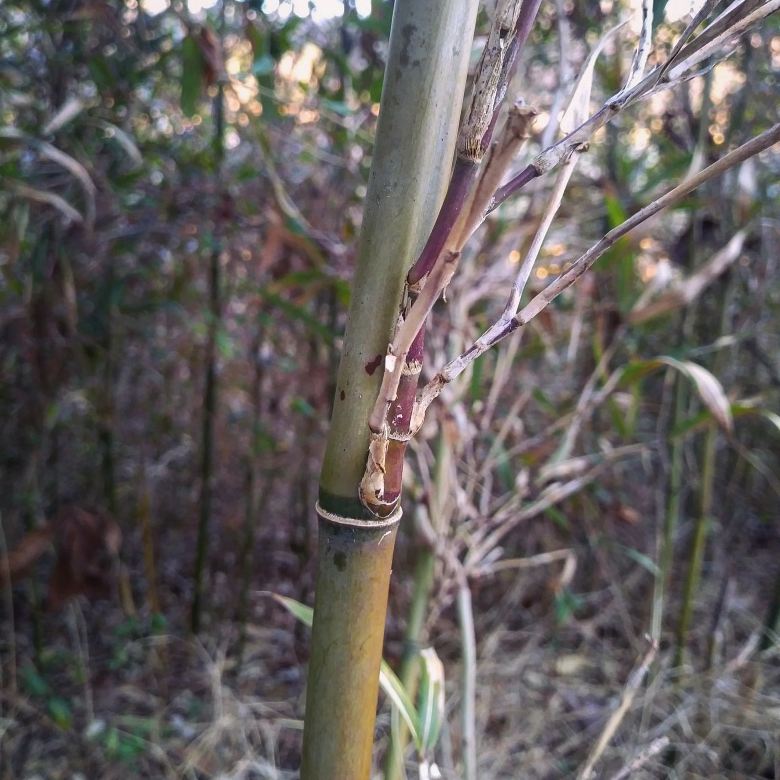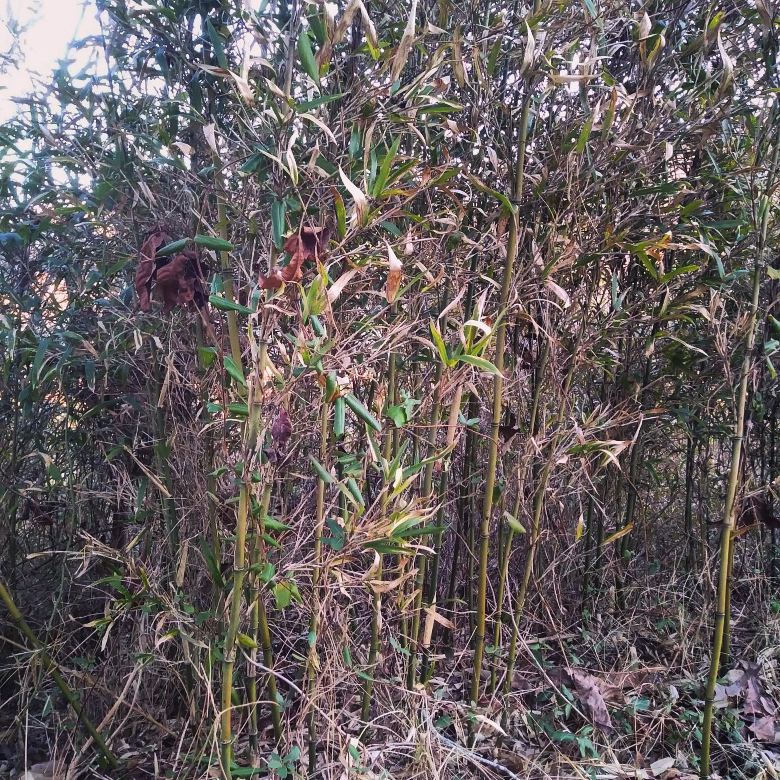Author’s Note: This post was originally published on the SARCRAFT Blog on 2/7/18.
This week’s plant for #WildEdibleWednesday is Arundinaria gigantea, otherwise known as River Cane, Switch Cane, or American Bamboo. Although much smaller in size, it is related to Asian bamboo species, and has many similar uses. Once growing in miles-long canebrakes along rivers and creeks throughout the Eastern U.S., river cane has lost much of its former glory due to overgrazing. Cattle, sheep, goats, and pigs all love it, and stands are slow to repopulate, which is a shame – it’s one of the most useful native plants for bushcrafting.
River cane is a grass, related to corn, broomsedge, lawn grass, bamboo, and wheat, among many others. Although its Latin surname “gigantea” would suggest it’s large, that’s really not the case. The biggest it ever gets is about nine feet tall and an inch in diameter at the base. Tree-size Asian bamboo dwarfs it. It has the same distinctive ribbed stems as bamboo, and is thickly covered with thin leaves about 4-6” long. It is semi-evergreen – shoots and a few leaves will stay green through the winter, but most will turn brown. Where it grows, it grows in thick stands, called canebrakes. You’ll never find just one river cane by itself. It reproduces asexually through underground rhizomes, so a stand of river cane may actually be just one giant plant, connected by its roots. Native to the entire eastern half of the U.S., river cane likes water. It will always be found in flat, moist areas like river and creek bottoms, hence its name.
River cane, like its cousin bamboo, is edible. The shoots of young and mature canes alike can be picked and either eaten raw, steamed, or added to soups or stews. To pick, grab the top of the cane and pull. Where the shoot pops off is the point where it’s tender enough to eat. Peel off the outer leaves, snap into bite-sized pieces, and you’re good to go. The best time to harvest cane shoots are in the spring and early summer, when they’re young and tender. Winter cane shoots are no delicacy, but will work just fine as a survival food. The seeds are edible as well, if unreliable. River cane only seeds once every four years or so and the seeds are small. But if you happen to find yourself in a large enough canebrake at the right time, they’re another great resource.
Where river cane really shines is in bushcrafting. The uses of river cane for projects big and small is limited only by your imagination. While not big enough to make cups, bowls, spar poles, and improvised iPhone speakers (if you know, you know) like bamboo, river cane is still a highly useful resource. It makes excellent poles and bobbers for fishing – just add hooks and line. A large piece with the end split and barbed makes a great fish spear. It was integral to native hunting gear – Cherokees used it to make arrow shafts, hollowed it out to make blowguns, used it for atlatl darts, and would even grind and fire-harden pieces into makeshift knives. It is useful as a shelter material – the largest canes can serve as supports for lightweight shelters, and smaller pieces work well woven into the frame of a wickiup or lean-to to support boughs, grass thatching, or other roofing. Young pieces can be split and woven into durable, flexible baskets. Cut pieces between the nodes and carve a stopper and you’ve got a vial for storing small, delicate items like fishhooks and line, spices for cooking, or flash tinder. Very small-diameter shafts can be woven into mats for sitting or sleeping on, much like any other grass. You can even cut a switch from it to whack your kids when they get unruly. Again – the uses are really only limited by your imagination.
River cane can be given partial credit for keeping Georgia and the rest of the Southern Appalachians out of Spanish hands. Between 1539 and 1541, Hernando de Soto led a contingent of 700 or so Spanish mercenaries to explore, conquer, and enslave the territory north of Spanish Florida. Word quickly spread among the native tribes of Georgia and Alabama that the Spaniards were on their way, so when de Soto’s men reached Cherokee territory, they were given a less than warm reception, to say the least. The Cherokee fired their arrows at the Spaniards… only to have them bounce off. The flint arrowheads couldn’t penetrate the Spanish chain mail armor. The native warriors quickly learned that if they left the arrowheads off and simply fire-hardened their river cane arrow shafts, that the shafts would hit the chain mail, splinter, and penetrate on through, killing their target. This quickly turned the tide against the outnumbered Spaniards, giving the Cherokee a significant tactical advantage and allowing them to harass the Spanish soldiers enough to force them out of the area and head west. The Cherokee would retain control of their land for nearly another three hundred years.
What about you? Do you have a local stand of river cane? Are there any uses we missed? Tell us in the comments! And if you LIKE what you see, SHARE it with your friends!
- Alex



